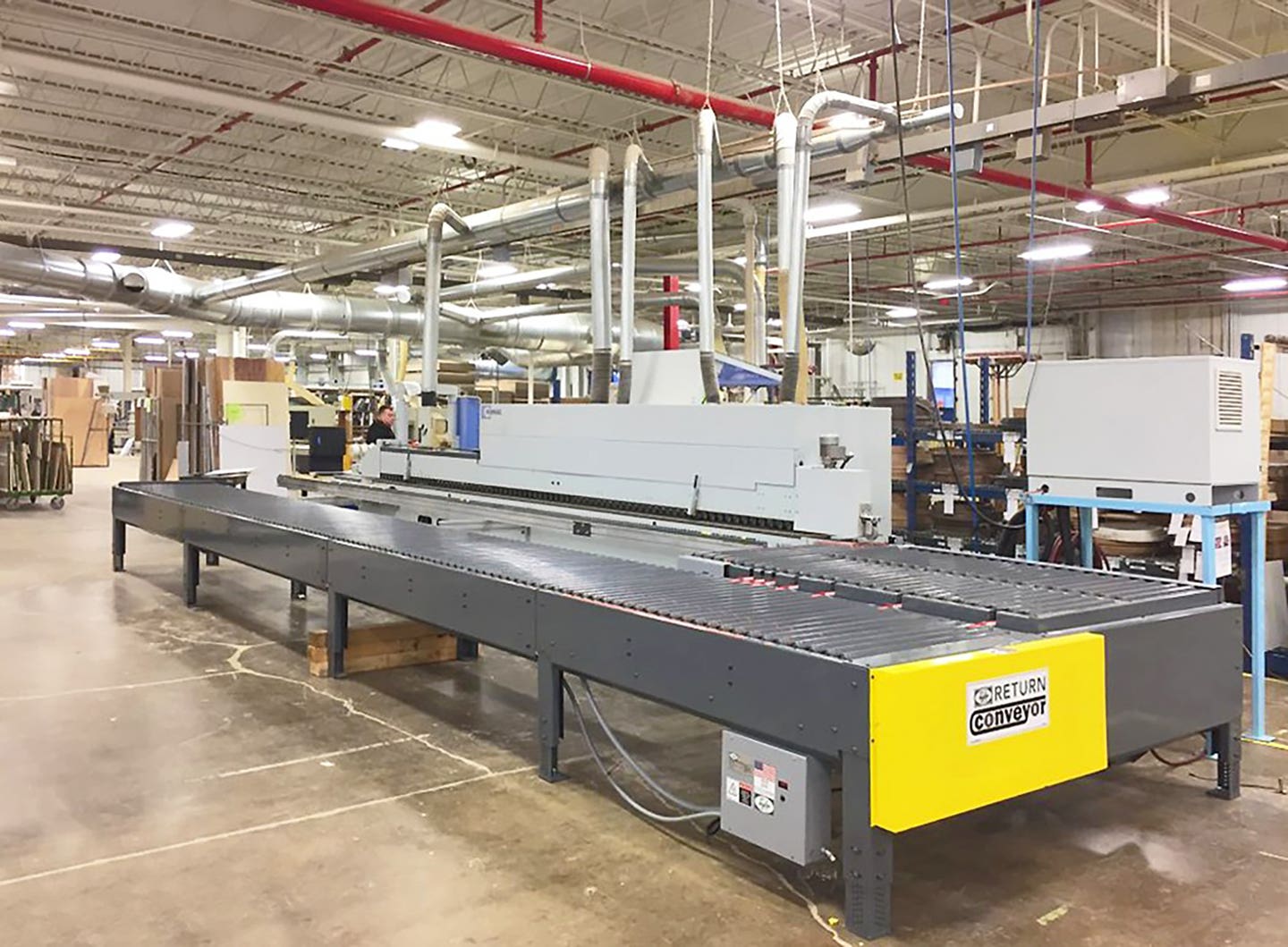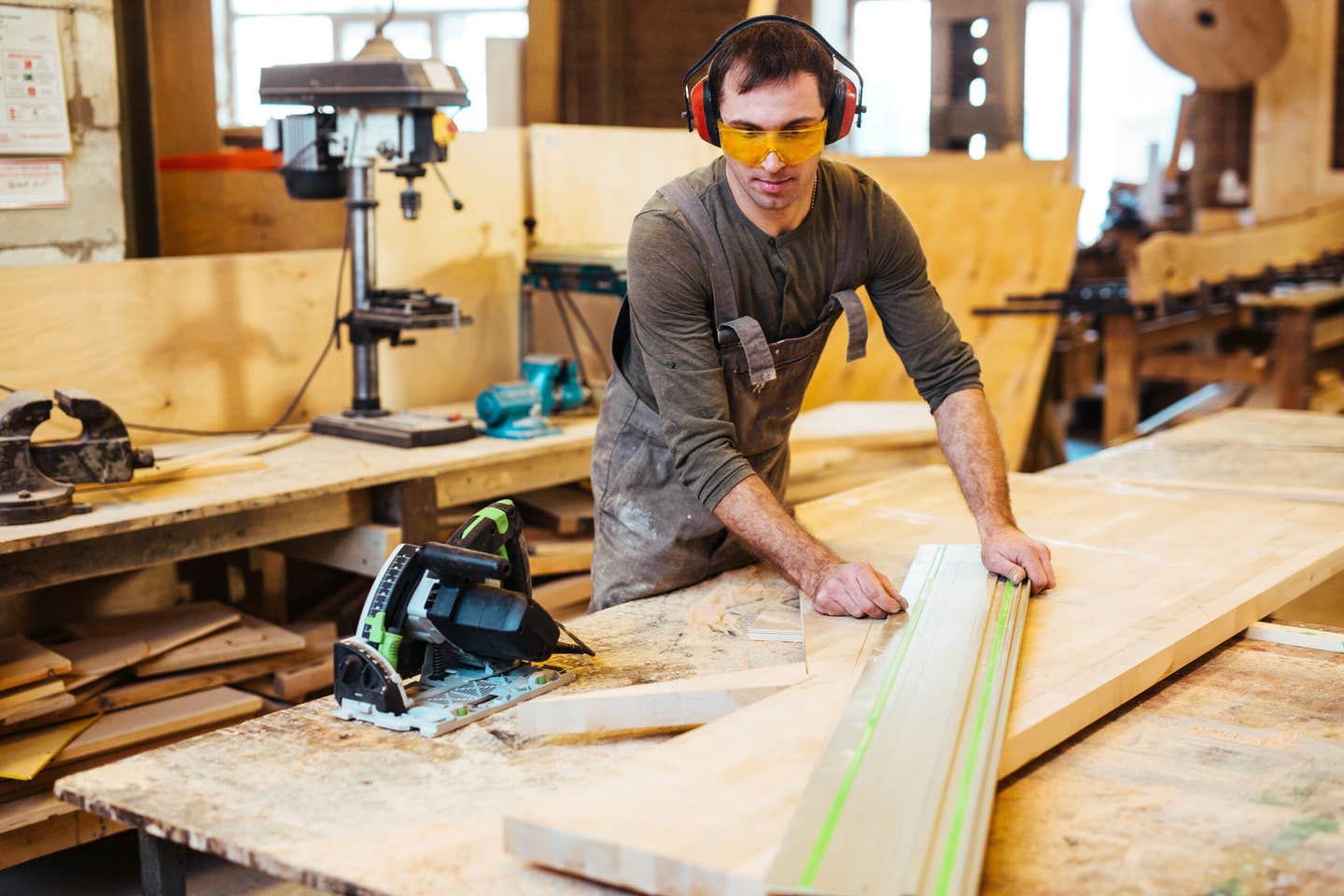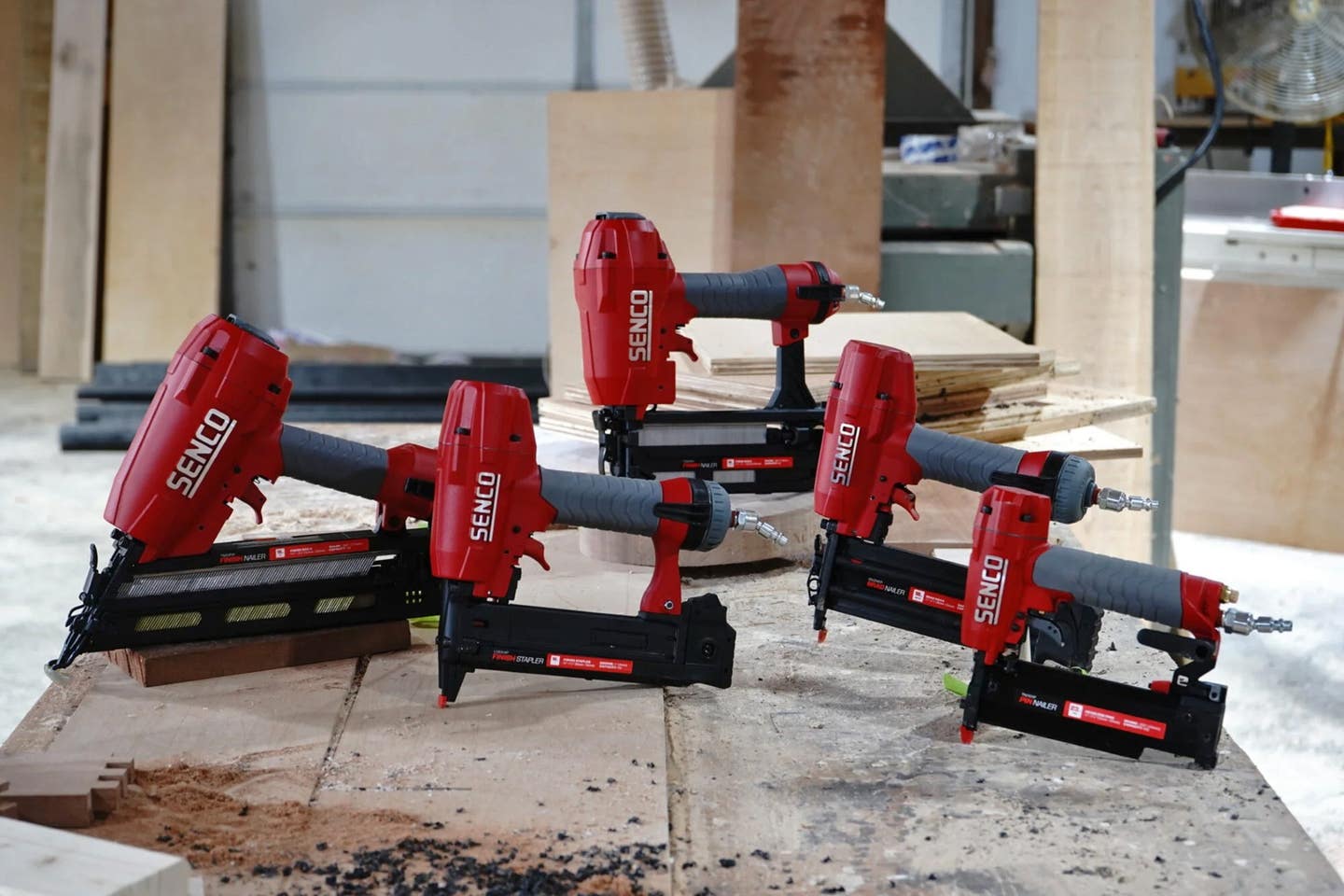Edgebanding: Sources, new materials and more
Rehau is a Bavarian town of about 9,000 residents in Germany near the Czech border, a couple of hundred miles north of Munich. It has been around awhile — the…
Rehau is a Bavarian town of about 9,000 residents in Germany near the Czech border, a couple of hundred miles north of Munich. It has been around awhile — the name itself dates from 1234 A.D. and the town is a lot older than that.
The biggest employer by far is the polymer manufacturer Rehau AG & Co, which was founded in 1948 and now employs more than 15,000 people around the world. Known to woodworkers for both edgebanding and vinyl windows, the company originally made garden hoses as well as parts for the old Volkswagen Beetle. Always innovative, Rehau was involved in the first German heart operation that used silicone tubes and also the first extrusion of a PVC window profile. It established a presence in the U.S. by opening a sales office in New York in 1959.
Today, Rehau (www.rehau.com) is known for innovations such as UltraLitec, a new type of production process introduced in 2011 that combines fibers with thermoplastics in a special compression molding and laying technique. And in 2013, the company unveiled RauVisio glass and high-gloss laminates for both edgebands and surfaces in the furniture industry. In November, Rehau began offering Magic 3-D edgebanding that “creates an illusion of depth and embossed texture using a decorative print that shows through a transparent PMMA surface,” according to the company. The tape uses two different lacquer types to create the illusion of 3-D. With excellent processing capabilities, Magic 3-D can handle tight radii, trims easily and can be polished or beveled without damaging an underlying print.
Commercial suppliers
Most shops get into edgebanding slowly. They transition from solid-wood custom residential doors to an occasional commercial job that requires clean edges, such as a clinic or school. When it’s time to ramp up that end of the business, it really helps to find a supplier that can offer solutions without adding any confusion. Part of that equation is great customer service and companies such as DC Distributing (www.dc-dist.com) have understood that for quite some time. That’s probably why DC is one of the largest suppliers of edgebanding and related products in the United States. The company offers custom services such as slitting and pre-gluing and a real person still answers the phone when a woodworker needs a little guidance choosing products.
FormWood Industries (www.formwood.com) is another great example. Located in Jeffersonville, Ind., the company has been manufacturing edgebanding and other veneer products since 1972. FormWood provides a variety of backer offerings and is now working in conjunction with the Forest Stewardship Council to create veneer sheets and architectural panels that have been FSC-certified. FormWood also sells bamboo veneer in both vertical (narrow cane) and horizontal (wide cane) cuts and in both natural and caramelized colors.
A lot of shops have invested in Festool’s new Conturo handheld edgebander since its introduction and also in the accompanying workstation that transforms it into a stationary machine. Among Festool’s distributors is Wood Werks Supply Inc. of Columbus, Ohio (www.thisiswoodworking.com), which also supplies Festool adhesives along with edge forming and trimming router bits and a line of Safety Speed Cut edgebanding machines.
Brian’s Tool Sales in Enfield, Conn. (www.brianstoolsales.com) carries four Cehisa machines and an AMT edgebander model. And Klingspor (www.woodworkingshop.com) offers a number of hardwood and melamine tapes. The company also supplies a pair of specialized router bits for creating a hardwood edgeband.
If you’re looking for a used edgebander, especially a larger machine, visit RT Machine online (www.rtmachine.com).
Another source for new machines is California-based Global Sales Group (www.globalsalesgroupllc.com), which offers both Safety Speed Cut machines and both a portable and a stationary option from Cantek (the MX500AU and MX330 models, respectively). Cantek itself also has an online presence at www.cantekamerica.com, where a shop owner can watch a video on the MX330 in action.
Reading about products and watching videos online can give a woodworker a pretty good idea of what a tool or a tape can do, but there’s nothing like talking with an experienced shop pro to gain the confidence to try new technologies. For example, cabinetmakers in Connecticut who need help with edgebanding can visit the physical retail store of Parkerville Wood Products (www.parkervillewoodproducts.com) in Manchester. The company started out building boxes and still has a custom woodworking division. Occupying 22,000 sq. ft., the staff at Parkerville has a lot of shop experience to help customers find hands-on solutions.
Keim Lumber Company (www.keimlumber.com) offers the same kind of experience on a much larger scale. Based in Amish country in Charm, Ohio, it’s a fourth generation family-owned business that began in 1911 as a rough lumber mill. Back then, there were only four employees. Today, the company occupies more than 700,000 sq. ft. of retail, office, warehouse and millwork production space and has 400 employees. Keim offers both real wood veneer edgebanding and melamine edgebanding from brands such as Therm-O-Web and Sauers. There are a variety of widths to choose from including the popular 2”, 7/8”, and 13/16” sizes, and the tape comes in lengths from 25 to 250 feet.
Manhattan Laminates Ltd. (www.manhattanlaminates.com) bills itself as the only full-line woodshop supply distributor in Manhattan and the company offers Formica-brand edgebanding.
Another way to learn about options like moving into edgebanded casework is to join an industry group such as the Architectural Woodwork Institute (www.awinet.org) and take part in its shop visit program. Local chapters meet at each other’s facilities and discuss methods, materials and machines over coffee.
Catalog sources
If you can’t make it to Manchester or an AWI meeting, there’s always the Internet. For smaller shops or occasional edgebanding jobs, retailer Rockler Woodworking and Hardware (www.rockler.com) lists 140 edgebanding-related products in the company’s online catalog. These include a huge array of FastEdge peel-and-stick options, plus hot-melt wood and plastic or melamine choices. Rockler also offers a number of simple, inexpensive trimming tools and some clamping solutions.
For tricky applications, Woodworker’s Supply (www.woodworker.com) suggests taking a look at super sticky FastCap SpeedTape. This patented product is a high-strength, pressure-sensitive adhesive that comes on a roll. All you do is peel off the liner and stick it into place. There’s no mess and you get a permanent bond. The clear, double-sided tape is great for applying edgebanding and also works for laminating, veneering and even installing light trim. Approximately 4 mils thick, it comes in 1” and 6-1/2” wide rolls and both are 50’ long. The company also sells FastCap and Edgemate wood edgebanding and the extremely simple Band-It brand trimmer that handles materials up to 1/8” thick.
Outwater Plastics of Bogota, N.J. (www.outwater.com) has been helping woodworkers solve production problems since 1972. When it comes to edgebanding, the company’s catalog has five pages of products to offer. These range from banders and trimmers to peel-and-stick wood and polyester tape. Outwater also sells pre-glued iron-on tapes, standard wood veneer edging, metal-like trims, glass-look banding, thin tapes and a line of impact resistant, rigid or semi-rigid PVC. The company’s Eco Style ABS edgebanding is chlorine-free, so it can be disposed of safely in an incinerator.
Edge It (www.edgeitedgebanding.com) supplies woodshops with PVC, metallic and veneer edgebanding. The wood species include, but are not limited to, oak, cherry, walnut, mahogany, maple and birch. Edge It also carries hot-melt adhesives and has a page on its website called “Clearance Sale” that is well worth checking out if your client hasn’t settled on a color choice. A woodworker can find some really good deals on custom orders that were never picked up or hundreds of tape rolls from popular manufacturers such as Nevamar, WilsonArt and Formica.
The Wood & Shop Inc. stocks about 50 different exotic or imported hardwoods and domestic species. The company’s online catalog (www.woodnshop.net) offers a number of solid wood, hot melt and PSA edgebandings for sale by the foot.
Other solutions
If your client wants something special, perhaps edgebanding in-house isn’t the solution. Outsourcing doors and panels can open up a whole menu of options that a smaller woodshop might not have the machinery or technical abilities to complete. And outsourced suppliers, especially the larger ones, are often on top of trends before they reach mainstream cabinet shops. For example, Decore-ative Specialties (www.decore.com) provides components to shops across the country and notes that while “edgebanding is traditionally used to provide a cohesive look between the material on the face and the edges, a recent trend in cabinetry uses a unique or contrasting edgeband to provide a distinct difference between panel and edge materials. This is especially popular with high-gloss looks and with silver or contrasting colored edgebanding applied. With custom cabinetry, the options for customization are endless.” Working with an established national door and case supplier is akin to having your own design department.
Another route to go is to use solid hardwood veneers and make your own custom edgebanding. Reputable suppliers such as Berkshire Veneer Co. (www.berkshireveneer.com) stock hundreds of thousands of square feet of raw veneer.
For more supplier information, visit our online resource guide at www.woodshopnews.com.
This article originally appeared in the January 2016 issue.







